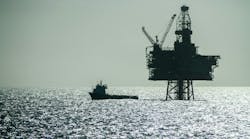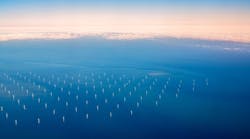Tenaz farms into North Sea cross-border GEMS gas project
Tenaz Energy has acquired a privately owned company with interests in the Gateway to the Ems1 (GEMS) project on the Dutch/German median line of the North Sea.
The purchase price was $244 million, with a further contingent consideration of up to $60 million based on development of future exploration prospects.
Tenaz estimates its net production from the acquired assets (mostly natural gas) at 3,200 boe/d this year, rising to about 7,000 boe/d. They include what the company says is the well with the highest production rate in in the Netherlands; two tested, unproduced gas pools; and various exploration prospects.
It expects production growth over the years ahead, with the potential to increase capacity as development and exploration progress.
Production is from the Basal Rotliegend sandstone within the Permian-aged Lower Slochteren Formation, deposited in a fluvial-to-deltaic environment in paleo lows. Gas is sourced from underlying Carboniferous coals, with the claystones of the Silverpit Formation forming the seal in these tilted fault block pools.
ONE-Dyas operates the GEMS project, which covers three licenses in the Dutch sector and two offshore Germany, with an average distance of 30 km offshore in water depths of about 25 m. Topaz’s interests in these licenses range from 22.5% to 45%.
Other partners are Dutch state-owned utility EBN and in the Netherlands and Eni in Germany (Eni’s presence came about following its acquisition of Neptune Energy). Topaz is thought to have gained entry through acquiring Dublin-based Discover Exploration, which itself acquired Hansa Hydrocarbons, one of the original partners that took FID on the project in 2022.
The currently producing N05-A platform, installed in August 2024, has a nameplate capacity of 225 MMcf/d. It is connected to the offshore NGT (Noordgastransport) gas-gathering system (in which Tenaz was already a partner) via a 13-km, 20-inch pipeline.
In the future, the platform will have a power supply connection to the Riffgat wind farm offshore Germany, with a goal of near-zero emissions from the facility once the switch has taken place.
Production from the platform started this March through the N05-A-01 well, currently flowing gas at a choked rate of 76 MMcf/d, the highest for any well in the Netherlands. Two infill wells are planned on the 219-Bcf recoverable N05-A pool, with drilling due to start shortly.
Two other proven but as yet undeveloped fields are the N04-A Field, where the discovery well in 2021 test-flowed at 50 MMcf/d, and N04-C, which tested at 21 MMcf/d in 2023. These are thought to hold 156 recoverable in total.
There are plans to develop both from the proposed 130 MMcf/d capacity N04 satellite platform, which would involve reuse of a topside from a decommissioned Netherlands block tied back to the N05-A platform.
Installation of the satellite facility and development of the two fields could begin in 2027, with production starting in 2028.
Three of the 14 exploration prospects across the licenses in the Basal Rotliegend, mapped from 2D and 3D seismic, could also be drilled from the existing N05-A and planned N04 platforms in the near term, with 358 Bcf of unrisked prospective resources.


